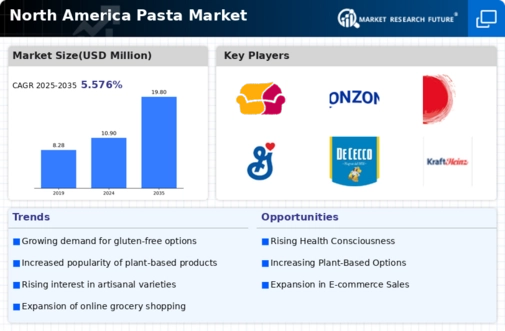The North America Pasta Market presents a dynamic landscape characterized by a blend of traditional and innovative products, catering to a growing consumer demand for convenience and quality. As health-conscious eating habits gain traction, the competition among pasta manufacturers has intensified, prompting companies to adapt and innovate in their offerings.
The market is influenced by broader dietary trends, including the rise of gluten-free, whole grain, and plant-based alternatives. These factors create a competitive environment where companies must differentiate themselves through product quality, brand loyalty, distribution channels, and marketing strategies.
The ever-evolving preferences of North American consumers have led to increased investment in research and development, enabling manufacturers to keep pace with trends and consumer expectations.
Mamma Mia has established a strong presence in the North America Pasta Market, recognized for its commitment to quality and diverse product offerings. The company focuses on creating pasta with authentic ingredients, catering to an audience those values both taste and health.
Mamma Mia's strengths lie in its ability to maintain high production standards while introducing new and innovative products that resonate with modern consumers. The brand’s marketing strategies effectively communicate its dedication to tradition and flavor, making it a prominent choice among pasta lovers.
Additionally, Mamma Mia benefits from robust distribution networks that facilitate the availability of its products across various retail channels, reinforcing its competitive position in the market. Ronzoni plays a significant role in the North America Pasta Market, known for its extensive range of pasta products, including traditional varieties and specialty options tailored to changing consumer preferences.
The company has cemented its place with key products such as macaroni, spaghetti, and gluten-free alternatives, addressing the demand for healthier eating habits. Ronzoni's market presence is further strengthened by strategic expansions and partnerships that enhance its distribution capabilities.
The company has pursued mergers and acquisitions to broaden its market reach and diversify its product portfolio, allowing it to respond effectively to emerging trends. Ronzoni's strengths include a loyal customer base and a strong reputation for quality, making it a well-recognized name in households across North America.
Through continuous innovation and engagement with consumer trends, Ronzoni maintains its competitive edge in the pasta segment.





















Leave a Comment